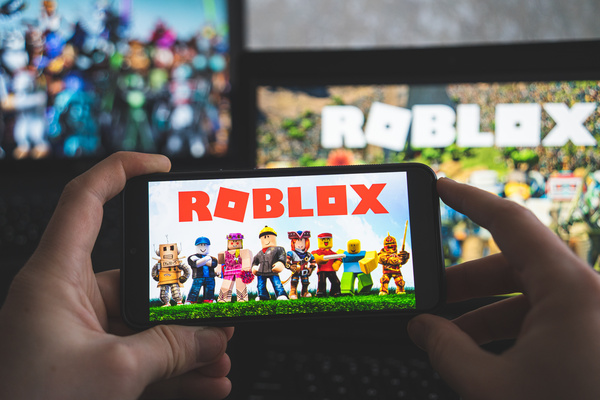Anúncios
In recent months, the world of drama has undergone a profound transformation, emphasizing inclusivity in storytelling. This notable trend is particularly evident in the growing representation of diverse characters and narratives across various platforms. Audiences are now more inclined than ever to see dramas that mirror the rich tapestry of human experiences, spanning different cultures, backgrounds, and perspectives. This shift serves not only to enhance storytelling but also resonates deeply with viewers from a multitude of experiences, making them feel seen and valued.
As cultural narratives evolve, so too do the dominant themes that shape our drama landscape. Psychological dramas, for example, have surged in popularity, exploring the intricacies of the human psyche in ways that were less common in the past. These thought-provoking dramas challenge traditional notions of morality and human behavior, inviting audiences into a reflective space where they can examine their own life experiences. The complex, multi-dimensional characters often mirror real-life dilemmas, forging an emotional bond that keeps viewers engaged throughout the unfolding narrative arcs.
Another significant trend observable in contemporary dramas is the rise of female-led narratives. Stories focused on women’s experiences, challenges, and triumphs are increasingly gaining the spotlight, marking a critical shift toward better representation in storytelling. As audiences clamor for powerful female characters, they are equally eager for rich narratives that delve deeply into the aspirations, failures, and victories of women. This evolution is vital as it amplifies women’s voices historically marginalized in media, paving the way for stories that explore the complexities of their lives in a meaningful way.
Young adult dramas have also experienced a remarkable surge, with their captivating portrayal of the tumultuous journey of adolescence. These narratives often explore pivotal themes like identity, belonging, and the transition into adulthood, resonating with both young audiences and older viewers who recall similar struggles. By sensitively tackling issues such as mental health, friendship, and love, these dramas connect with audiences on a profound level. The relatable characters and gritty realism allow viewers to reflect on their formative years, enriching their viewing experience with nostalgia and recognition.
In adapting to the evolving preferences of modern viewers, streaming platforms have emerged as a cornerstone in the evolution of dramatic storytelling. Series produced for platforms such as Netflix, Hulu, and Disney+ have transformed the way stories are conceptualized and shared. The binge-watching phenomenon enables deeper character development and the exploration of intricate plotlines, creating richer, more immersive experiences that require viewers to engage with the material on a more profound level than before.
The global reach of these streaming platforms also plays a significant role. They make stories from various cultures accessible to wider audiences, bridging gaps between different cultural narratives. For example, K-dramas have gained extraordinary popularity, offering narratives that are rich in cultural nuances and resonate with worldwide viewers. This cultural exchange has enhanced the demand for stories that transcend geographical borders, providing a unique lens through which societal issues can be explored in varied contexts.
One particularly compelling focus in modern drama is the in-depth exploration of mental health. Many series now address this critical subject with the necessary sensitivity and depth, highlighting characters who struggle with various mental health issues. By normalizing conversations about mental health, dramas encourage audiences to confront their own challenges.Furthermore, this approach works toward dismantling stigmas often associated with mental illness, fostering a broader comprehension of issues surrounding mental well-being.
Additionally, the concept of ‘slow-burn’ storytelling has been embraced in many recent dramas. This narrative style allows for an organic build-up of tension, giving ample room for character development. Instead of hastily rushing to pivotal plot points, writers take their time, facilitating a deeper connection between viewers and characters. This method frequently results in dramatic payoffs that feel not just earned but also satisfying, making the emotional ride even more worthwhile for those watching.
Historical dramas continue to captivate audiences, skillfully blending education with entertainment. These stories provide a unique lens through which pivotal moments in history can be examined and understood. By focusing on the human experiences that existed behind significant historical events, these dramas breathe life into the past, creating opportunities for viewers to connect with their heritage in deeply impactful ways. This connection often inspires contemplation of contemporary issues as we reflect on how historical contexts shape modern society.
The integration of technology into storytelling has also played a crucial role in the evolution of drama. The incorporation of digital media, augmented reality, and various interactive elements into dramas enhances the viewing experience significantly. Innovations such as these not only enrich storytelling but also invite viewers to actively engage with narratives, creating opportunities for new forms of participation. This fusion of technology and drama may signify the dawn of a novel era in how stories are consumed and experienced.
Moreover, the influence of social media on drama must not be overlooked. Platforms like Twitter and Instagram facilitate real-time engagement between fans and creators, enabling viewers to share their opinions and insights instantaneously. This dynamic interaction contributes to a vibrant community of viewers who passionately support their favorite shows, often influencing the development of future story arcs. The feedback loop this interaction creates nurtures a collaborative environment that ultimately enriches the viewer’s experience, creating a sense of belonging among fans.
The pandemic has also notably changed how we consume dramas. With many productions halted, the demand for new content rose significantly, prompting creators to explore unique storytelling formats. Short-form dramas emerged as an innovative way to cater to audiences seeking quick and engaging content. These bite-sized narratives are especially appealing for viewers with busy lifestyles, allowing for the enjoyment of compelling stories without the time commitment traditionally required for longer series.
Concurrently, the importance of cross-genre storytelling has gained significant recognition. Dramas that blend elements of comedy, fantasy, or even thriller invite myriad storytelling techniques and exploration through various lenses. This approach leads to inventive narratives that can captivate diverse segments of the audience. By breaking down the constraints typically associated with a specific genre, creators keep storytelling fresh and dynamic, making it accessible and exciting to an array of viewers.
As part of this broader narrative evolution, the exploration of moral ambiguity within characters has become a defining characteristic of contemporary dramas. Today’s narratives often portray protagonists wrestling with difficult decisions that lack clear moral absolutes. This complexity resonates with real-life moral dilemmas faced by many, encouraging viewers to navigate their own ethical landscapes. By presenting characters with flaws and struggles, dramas invite audiences to genuinely engage with the messy realities entailed in human choice and decision-making, promoting empathy in the process.
Furthermore, it’s important to acknowledge the critical role of soundtracks in the realm of contemporary dramas. Music has become an integral aspect of storytelling, serving to evoke emotions and enhance the overall viewing experience. Iconic songs often become synonymous with particular shows, creating enduring memories associated with specific character developments or pivotal scenes. Soundtrack curation in dramas has garnered increasing attention, with creators striving to compile music collections that reflect the thematic elements and emotional peaks of their series.
Lastly, the exploration of complex family dynamics ranks among the key themes at the heart of many modern dramas. These narratives delve into the multifaceted nature of familial relationships, exploring love, conflict, and pathways toward reconciliation. By portraying the intricate layers of family life, dramas engage their audiences in universal themes that touch on connection and identity. Whether the storyline leans toward comedy or tragedy, these family-centric stories resonate deeply, fostering empathy and a broader understanding of diverse familial experiences.
In conclusion, the landscape of modern drama is vibrant, ever-evolving, and marked by inclusivity, complexity, and a spirit of innovation. The shifting trends in storytelling reflect audience desires for diverse and relatable experiences that resonate on multiple levels. With an ongoing emphasis on the integration of technology, global narratives, and a heightened focus on mental health, creators are shaping dramas that not only challenge norms but also inspire profound reflection. As we look forward to the future, it’s clear that the genre of drama will continue to push boundaries, redefine narratives, and evolving the ways stories are told and experienced by audiences across the globe.



